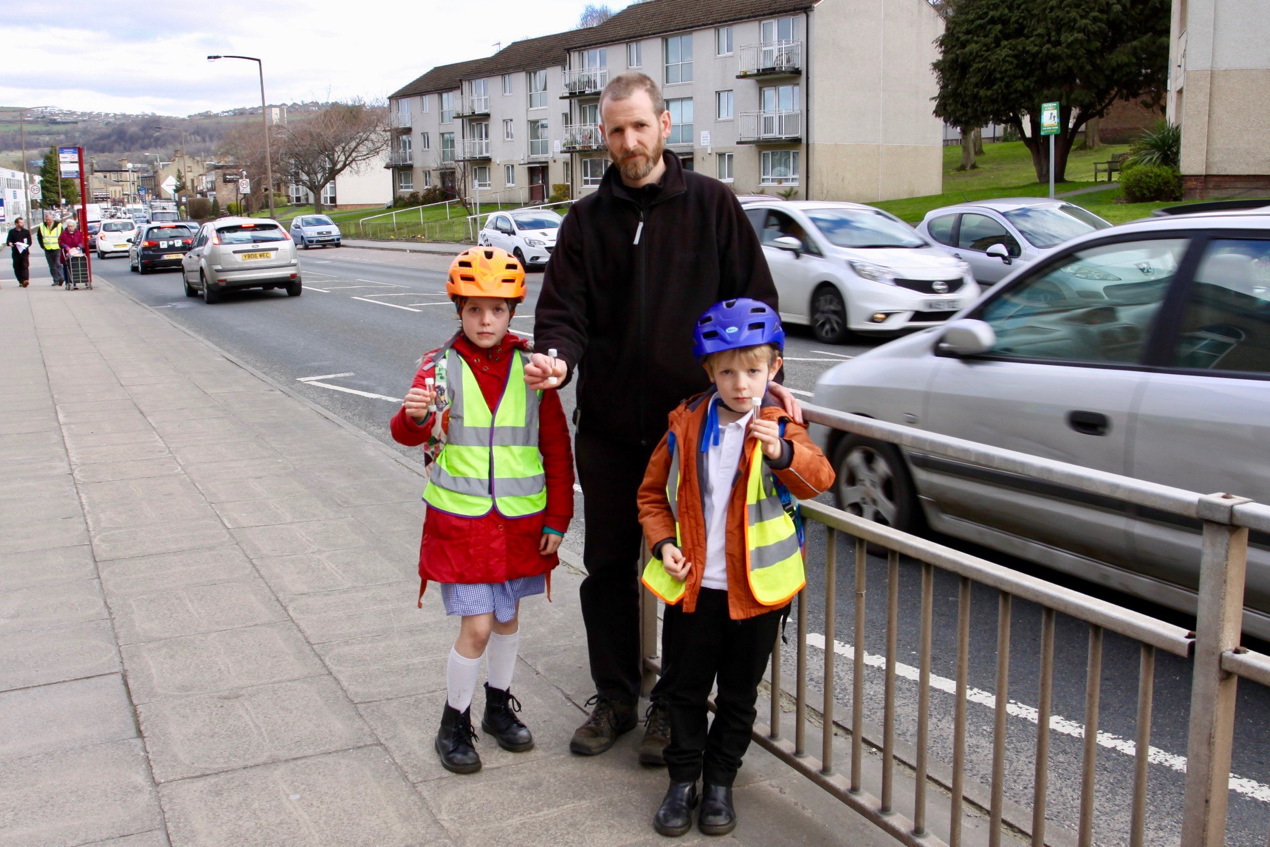Sins of emission
Children at a Shipley school are taking air pollution measurement into their own hands
The A657 through Shipley on the north side of Bradford is the most congested road outside London, according to transport data company Inrix, and the traffic jams are estimated to cost regular users a total of 44 lost hours a year. The cost to health as a result of vehicle pollution is unknown, but there is concern that a primary school with
330 pupils stands right next to the road.
No air quality monitoring has been carried out there by Bradford Council, and so the school is starting its own scheme after consultation with parents. In what may be a first for the UK, the pupils themselves are using equipment to test pollutant levels.
“We know from other tests along this road that the pollution levels are illegal.”
The effects of emissions from vehicle exhausts on young children were highlighted in February when the High Court was asked to order another inquest into the death of nine-year-old Ella Kissi-Debrah. She died after a series of severe asthma attacks, and many of her hospitalisations were found to coincide with local traffic pollution spikes. The coroner recorded the cause of death as acute respiratory failure but her mother wants this replaced by air pollution on her death certificate because she lived 80ft away from London’s congested South Circular Road.
In Shipley the front door to Wycliffe Primary School is around 30ft from the congested A657, and after concerns were raised by a group of parents an eco-club has been set up to involve the pupils in monitoring air pollution. Glass diffusion tubes that can measure nitrogen dioxide levels will be installed by pupils under the supervision of teachers, and the results sent for analysis by Friends of the Earth.
One of the parents is Darren Parkinson, whose children Freya, eight, and seven-year-old Jake are both asthmatics. “We know from other tests along this road that the pollution levels are illegal,” he tells Big Issue North. “Looking at the heavy traffic it would be a surprise if they weren’t. Air pollution is an exacerbating factor for asthmatics so this is a real worry for us.”
The school was built in the 1870s and has 10 classrooms as well as a dining room, gym, libraries and assembly hall. But its location at the heart of a Victorian residential neighbourhood in a narrow part of the Aire Valley makes the problem difficult to solve. A proposed bypass to divert through traffic has never been built, the main obstacle being the conservation area of Saltaire, a Unesco World Heritage Site, which is just 200 yards up the road from the school.
“We can’t just pick up the school and move it away from traffic,” Parkinson says. “And anyway, it’s a valuable part of the community. So we need action to reduce the amount of traffic. In the meantime we’re thinking about what mitigating factors can be introduced, such as planting a green screen in front of the building. There’s research that says greenery can absorb toxins and keep down pollution levels.”
In 2017 a joint survey by Greenpeace and the Guardian found that in England and Wales 2,091 schools, nurseries and other education facilities for young people were close to roads where levels of nitrogen dioxide from diesel traffic were found to exceed the legal limit, in some cases by three times as much as the “safe” figure. Of these, 1,013 were nurseries looking after 47,000 children from six months to five years of age.
Last month Friends of the Earth released a study showing that the Yorkshire and the North East region had the worst levels of nitrogen dioxide outside London. The pollutant mainly comes from diesel vehicles, and besides being linked with asthma can increase the risk of heart attacks, strokes and cancer. The highest levels within Yorkshire were found in Leeds and Doncaster. A recent report by Public Health England said air pollution was now the biggest environmental threat to health in the UK, with up to 36,000 deaths a year blamed on long-term exposure.
In March a study by the walking and cycling charity Sustrans found that almost two-thirds of teachers support car-free roads outside schools during drop-off and pickup times, and more than half wanted urgent action to improve air quality near schools.
Photo: Freya (eight) and Jake (seven) with father Darren Parkinson show pollution monitoring tubes outside their Yorkshire school

Leave a reply
Your email address will not be published.